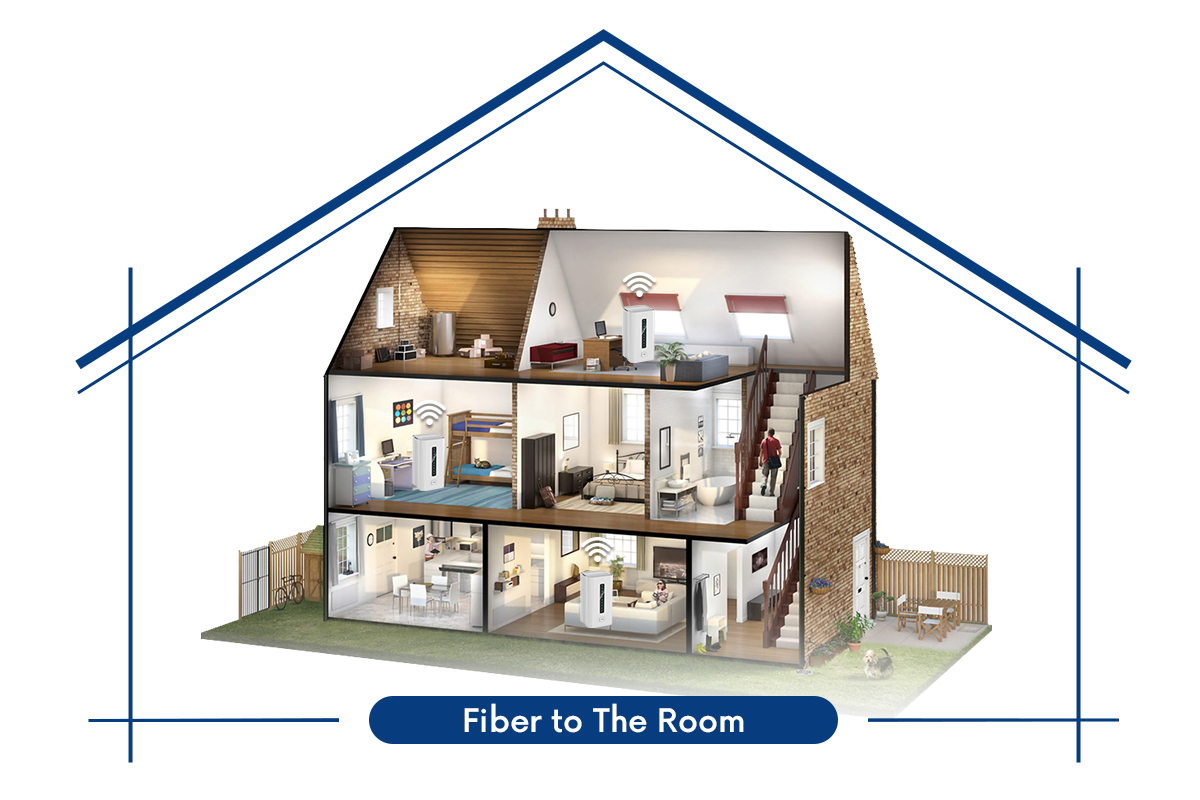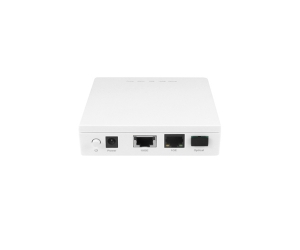How much do you know about the FTTR?
FTTR
The Internet has grown to be an essential component of life in the digital age of the Internet of Everything. The pursuit of spiritual demands and life quality is increased with an increase in economic status, and each family has larger expectations for the network’s speed, reliability, and coverage. All of these factors combine to make the arrival of the gigabit age an unstoppable trend of the day. Fiber to the building in the 10M era; fiber to the house in the 100M era; and fiber to the room in the gigabit era.
What is FTTR: The Ultimate Solution for Home Gigabit Wi-Fi Technology
A fundamentally technical way of optical fiber access is called “FTTR” (Fiber to The Room), which refers to the laying of optical fibers to remote nodes. Additionally, there are FTTB, FTTC, FTTZ, and FTTH. They can be arranged in a tree, bus, ring, or star topology.
In the gigabit era, FTTR is a new coverage option for the home network as well as another advancement in home networking technology. Optical fiber was once utilized in the living room, but it is now present in every room. In the entire home, FTTR delivers Wi-Fi 6 Gigabit coverage with low latency, excellent quality, and great stability.

Why do we need FTTR: complete gigabit Wi-Fi coverage?
Most customers must be wondering why FTTR is necessary when Wi-Fi is already available. The indoor Wi-Fi of the majority of home internet customers is linked to a router through an ONU (Optical Network Unit) and is therefore covered by the router’s Wi-Fi signal. Frequency bands 2.4 and 5 are supported by routers. The 2.4G frequency range can support a maximum rate of 300Mbps, however because to the significant interference in this frequency band, the real usage impact is significantly poorer. Users that want high bandwidth applications must use the 5G frequency range, however because of the weak WiFi signal’s ability to pass through walls, some large-scale users experience significant annoyance with their high bandwidth applications.
Simply said, if the Gigabit optical network were likened to a highway, FTTR would be responsible for paving the road to every room in the home, while FTTH would be responsible for paving the road to the door of the house. This successfully addresses both the issue of interior Wi-Fi network coverage and the issue of Wi-Fi becoming stuck. Every area of the house is covered by a super-gigabit Wi-Fi network that is stable and offers a five-star broadband experience with low latency, numerous connections, extremely high speed, and other characteristics to satisfy the demands of the entire family for a high-quality network. Everywhere, at any time, people may take advantage of VR movies, VR games, 4K films, real-time meetings, and ultra-smooth online lectures. The balance of life and work is actually the foundation of the digital “Utopia” age.

Advantages of FTTR: Light up a new era of gigabit
- High bandwidth and fast internet speed
FTTR solutions deliver true gigabit bandwidth to the room. The primary ONU is upstream linked using 10G EPON or XGSPON, with a maximum rate support of 10Gbps. The slave ONU, which has a Gigabit Ethernet port and Wi-Fi 6, is linked to the space via optical fibre. With this approach, the performance degradation brought on by the Wi-Fi signal weakening through the wall is avoided. True gigabit bandwidth may be sent to the space thanks to the Wi-Fi 6 air interface rate, which can surpass gigabit.
Soft, non-oxidizing, non-corroding, and immune to electromagnetic interference are some properties of the optical fiber. One deployment can provide benefits for 30 years, and its service life is up to 30 years. More than 100Gpbs of bandwidth may be added to it in the future, fulfilling the demands of upcoming high-bandwidth services.
- Good experience: seamless roaming, on-perceptual switching
After the slave OTN is turned on, the master OTN is instantly linked. The master OTN unifies the house Wi-Fi, which may be instantly synced with the slave OTN.
One SSID is used across the entire home for terminal device access, and it is shared by 2.4GHz and 5GHz Wi-Fi. Depending on the terminal equipment’s signal strength, the FTTR main optical modem chooses a certain frequency band for access. For the purpose of ensuring that the terminal equipment has the highest possible bandwidth carrying capability, the 5GHz frequency range is chosen preferred.

- Multiple terminal connections
The maximum number of connections in traditional networks is 8-10, so it can support 256 terminal device connections, effectively allowing a range of whole-house smart terminals, such as laptops, TVs, mobile phones, tablets, and VR, to be linked to the Internet.
- Full coverage upstairs and downstairs
Whole-house smart gigabit fiber (FTTR) uses the 10 Gigabit OTN 1-to-N mode. Whether in the hallway or the room, the entire home is connected with optical fiber. The fiber offers a greater transmission rate, more robust transmission capacity, and longer network cable life. In addition, it can dynamically show a broad range of technical signals and enable 10 Gigabit uplinks.
Some important functions of FTTR includes:
1) Network visibility: Always available to all users at all times
Key events are shown, and filtering by time and event is enabled. Home topology and device information are accessible, and 7-day history restoration is supported.
2) Problem-solving: Cloud-based Wi-Fi troubleshooting minimizes door-to-door visits.
Automatically recognize interference, coverage, connection, and equipment issues, investigate their underlying reasons, and offer recommendations for improvement. One-click identification and rapid diagnosis of common issues take only a few minutes.
3) Performance optimization: Lower Wi-Fi support tickets
Automatic channel tuning based on big data learning from the past.
4) Understanding the features: Identifying user features to promote customer UC realizations
To assist operators’ active maintenance and commercial realization, identify users with significant interference, inadequate coverage, and poor device performance.





